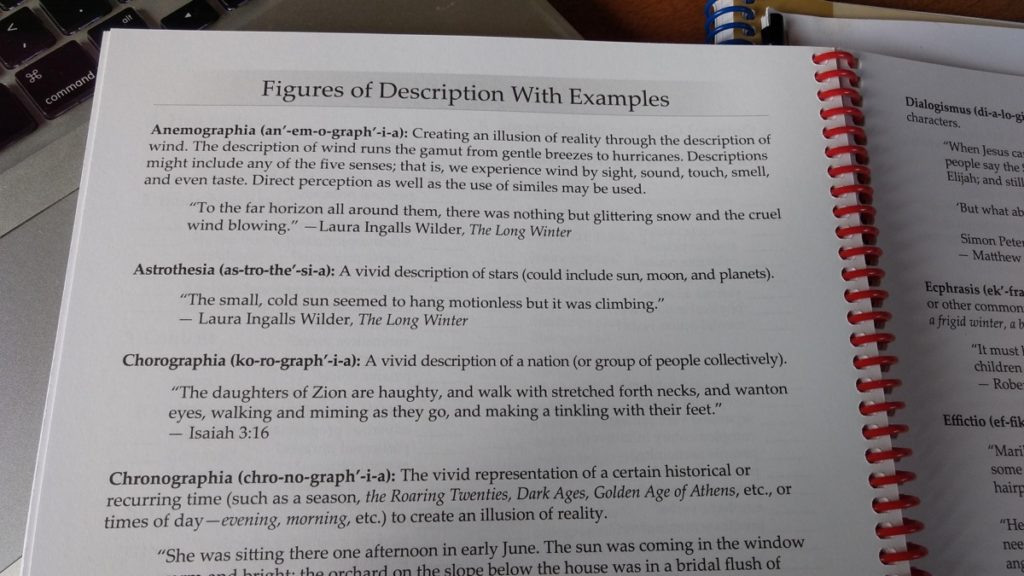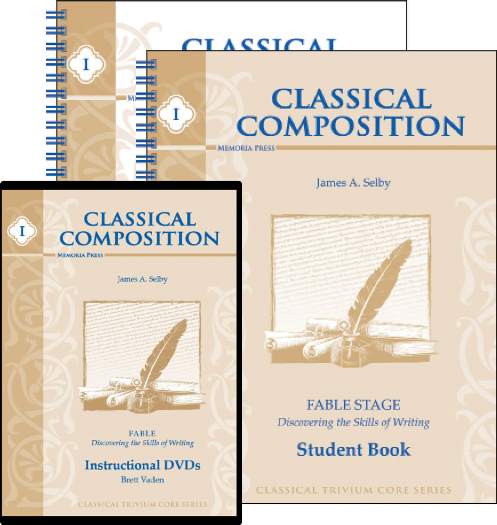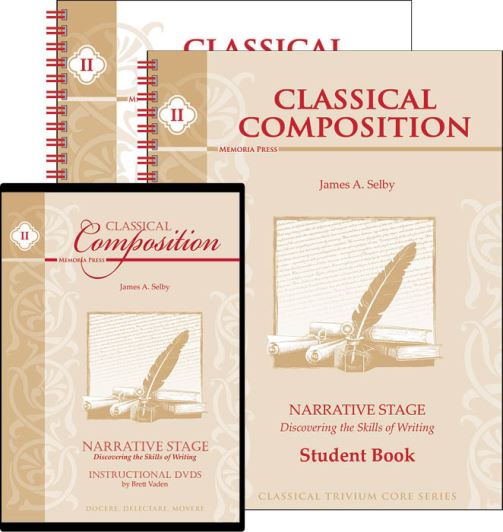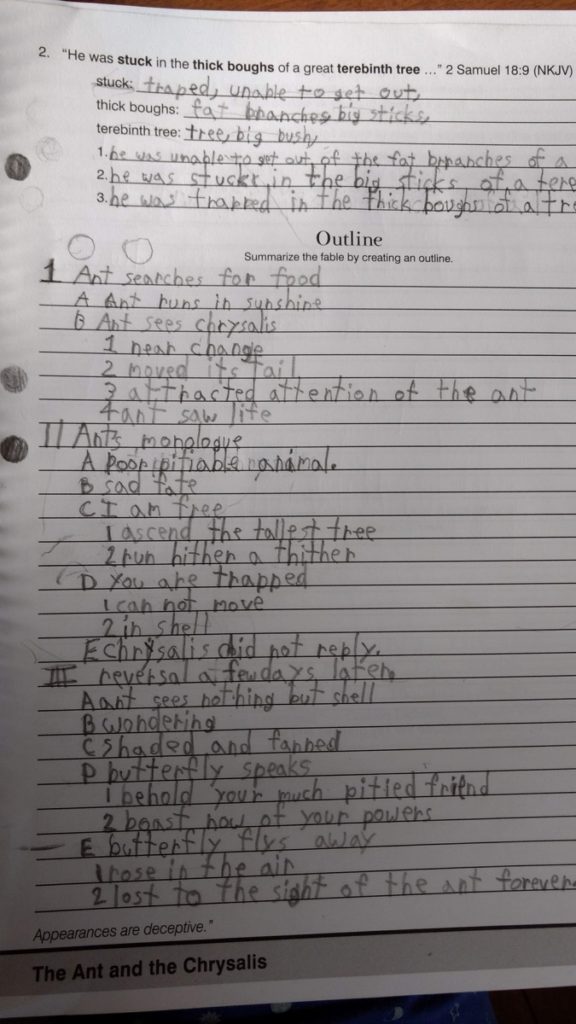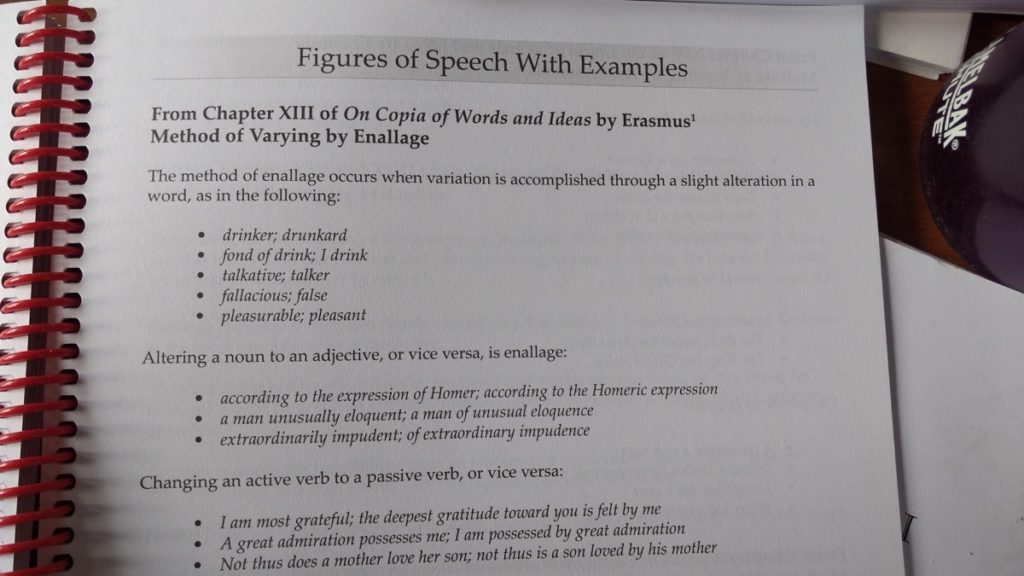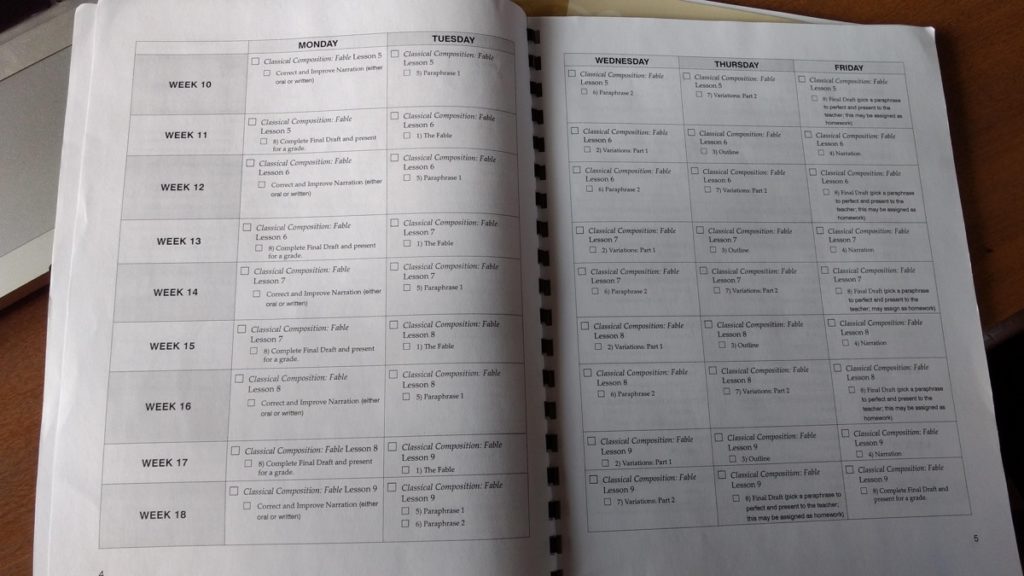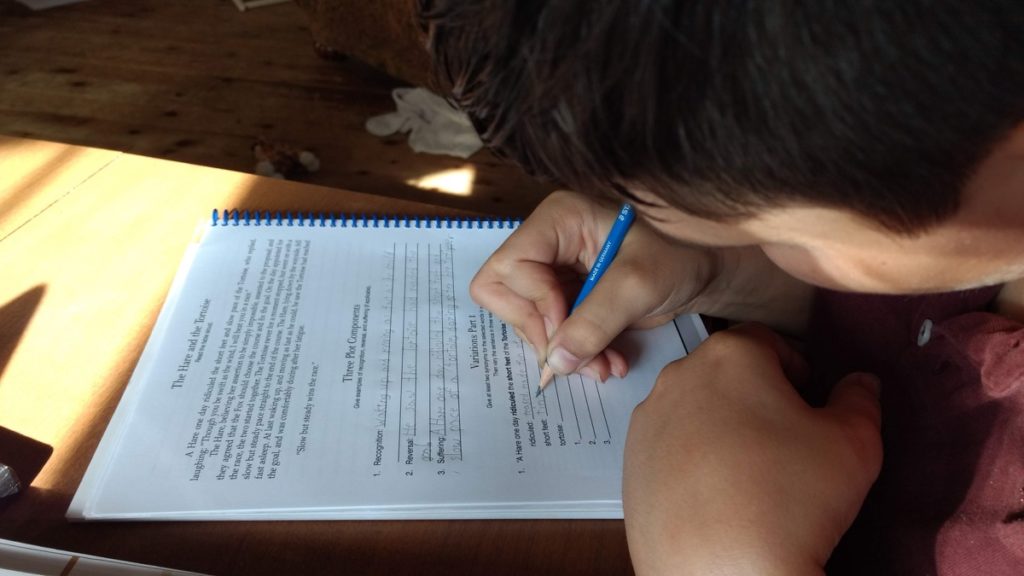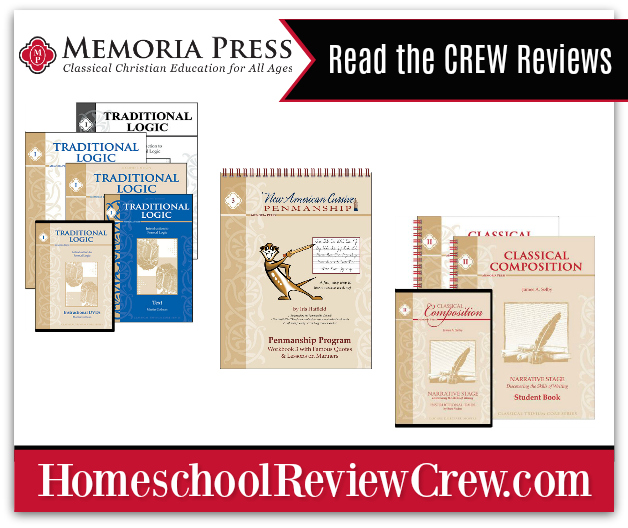Memoria Press has done it again. You know that, even though we’re primarily Charlotte Mason homeschoolers, we like to incorporate classical products from Memoria Press. Currently our 12-year-old son is working through the first two levels of Memoria Press Classical Composition by James A. Selby, namely Classical Composition I: Fable Set and Classical Composition II: Narrative Set.
I am going to try to make this review humor-free. Just the facts, ma’am. Just the facts.
Who is Memoria Press?
Memoria Press is one of the big names in classical curriculum. They offer complete studies that your students can follow from little onward that will encompass their entire education. They also provide “piecemeal” products if you want to add one or two topics to your current studies. (We have some of their literature products as well as their First and Second Form Latin.)
They also have several wonderful special needs products by a mother of adopted special needs twins who have done remarkably well and are now adults.
Talk about the Classical Composition.
Gladly!
Author James Selby’s goal in producing the Classical Composition line is to raise excellent, thoughtful writers in the same manner that many of the greats (thin Benjamin Franklin) were trained for over a thousand years. He puts it into an easy-to-use format that will not strain the brain of the parent-teacher who may have not been trained to write well.
The purpose is to teach children not only to write, but to reason well, two skills that academia has found lacking in college freshmen. Combining logic with imagination is another goal. Who wants boring reason? Not us! By the end of the program, a student will hopefully be able to communicate logically in an engaging style.
The 14-step path to . mastering writing is intended to begin in the fifth grade, but that is not necessary. If your students start later, (my son began in sixth grade), they simply move faster. As a sixth grader, my son began with Classical Composition I: Fables, and works through five lessons a week to finish a lesson a week. He will then advance to Classical Composition II: Narratives, and progress at the same speed. Next year he will slow to the regular pace. (See the tweak section below for some personal information on how we do this.)
The fable stage contains 20 lessons that each follow a similar structure. Each lesson is based on one of Aesop’s fables, engaging stories my kids are highly familiar with anyway, which makes the experience more comfortable and enjoyable.
Each lesson has the student reading the fable several times, recognizing various aspects of the story, writing variations, narrating, outlining, inverting sentences, writing more variations, and producing a final draft. Ultimately, the students are reading the fables and imitating them, imitation being one of the greatest ways to learn to write well.
The narrative stage works in a similar way. There are 20 lessons that each follow a pattern, this time based on a narrative. Students orally narrate the story. They then learn to identify components of writing evident in each narrative they read. Then, similar to the previous level, they outline, narrate, paraphrase, and work on variations and tweaks until they eventually present you with a polished final draft.
The narratives are interesting and brief, so your student can focus on developing skills rather than wading through a mire of confusion.
Classical Composition is a Christian series. While it will work with anyone, there are Scriptural references. You also will not find questionable behaviors or concepts promoted in any way.
Looking at some of these pictures, you might find some of the concepts to be quite advanced. It’s true. You will definitely be learning alongside your children. That’s why I recommend watching the videos with your kids and being involved, at least at the beginning. It doesn’t need to be entirely hands-on with the parent, although being available and knowledgeable enough to help will be an asset. The teacher’s guide will help you with that.
Personally, I am not highly involved, but I do read up a bit on what my boy is learning, so that I can assist him as needed. So far, I’ve only helped him about three times. The rest he does on his own after watching the videos.
You tweak everything! What did you tweak here?
We don’t generally use formal writing curricula around here in the early years, and sometimes not at all. We’ve used curricula in the past that have made my word-lovers hate writing. That’s not where I wanted to go!
I know the importance of quality writing skills, and I know how rare they are. When I was a college writing tutor, every college freshman had to come through the Writing Center to be evaluated. There were three students (only one of them came straight out of high school–the other two were non-traditional) in my share of freshman class who had a solid grasp on writing…and I married one of them. (See how important good writing skills are?!) I couldn’t believe the junk I was reading! It was horrible!
I knew I wanted my kids to be “among the three,” but I didn’t want to destroy their love of writing with tedium, over-analysis, boredom, or the corniness that is so often part of courses for children. Oh my kids hate that! There is no corn in anything we’ve seen from Memoria so far, so we were good there, but what about tedium and over-analysis? A strictly classical education is an intensive study. That’s one of the reasons we switched to Charlotte Mason’s more gentle approach.
No problem! While I did find many of the questions and answers in the curriculum to be fairly subjective, learning to deal with “no right answer” is part of the writing and thinking process. It isn’t math…which is why some of us like writing so much. (Whoa, that was almost a joke.) IT’s difficult for the younger crowd to try and gasp what the author is getting at sometimes, and also to accept that there may not be one right answer. Learning that concept is crucial learning, but it takes a while to accept. I don’t want frustration to take over and be applied to the writing process while that learning is taking place.
So our tweaks? For the period of the review, we tried to stick with the advanced schedule as outlined by Memoria. Now that the review is over, however, we are going to slow down to maybe 3-4 lessons per week. We can do this in part because we school year round. Also, I don’t have any problem with Elijah doing 1.5 books in sixth grade and 1.5 in seventh and landing right back on track by eighth grade. Any time spent in these books will be beneficial.
Since Elijah currently wants to be a pastor, I want him to have solid writing skills. We’ve all sat through sermons which take you…nowhere. You arrive at the end wondering what on earth that story had to do with the point of the sermon, why he started randomly talking about women in the Bible when the focus was Moses, why there was all that fluff and no actual meaning, or what the whole sermon was even about! It’s a waste of time. I don’t want some of my son’s congregants bringing friends to church for the first time and having them walk out with fluff between their ears because my boy can’t write a decent sermon!
We’re going to continue on the Memoria Composition path until he at least finishes the first two levels. We’ll see where we go after that. But currently we are doing it at a slightly slower pace when necessary.
What does Elijah think?
“I think it’s fun, but challenging. I can still do it, though.”
He’s a pretty wordy guy, but not when I ask him for quotes.
Some technical details.
The sets sell for $85, currently two levels for $120, although I don’t know how long that special will last. For subsequent students, you will only need to replace the consumable student workbook, which is $19.95 as of this writing.
The set includes a teacher’s guide which includes answers (helpful for ideas, because some of the answers are very subjective), teacher helps, rubrics, and additional information throughout. It also includes a DVD teaching each lesson. Finally, there is the consumable student workbook.
If you want more information, you’re in the right place!
The Memoria Press products the Homeschool Review Crew has been using and writing about are listed below, so take a look at any of them that interest you. Memoria has numerous other products we like and have used (particularly their literature and Latin products in our house), so explore! Also, consider signing up for their magazine/catalog combo, which is an education in itself! Check out some of these other products:
- New American Cursive 1
- New American Cursive 2 (Scripture)
- New American Cursive 2 (Famous Americans)
- New American Cursive 3 (Famous Quotes)
Traditional Logic:
Classical Composition:
To read reviews on the above products from the Review Crew, click right here or on the image below.
If real life catalogs aren’t your thing, you can also follow Memoria on social media. They are everywhere! See:
- Facebook: https://www.facebook.com/memoriapress/
- Twitter: https://twitter.com/MemoriaPress Tag: @MemoriaPress
- Pinterest: https://www.pinterest.com/memoriapress/
- Instagram: https://www.instagram.com/memoriapress/ Tag: @memoriapress
- Google+: https://plus.google.com/u/0/+Memoriapress1 Tag: +Memoriapress1
- YouTube: https://www.youtube.com/user/memoriapress/
Did I successfully publish an entire review without a single joke? Weird!

